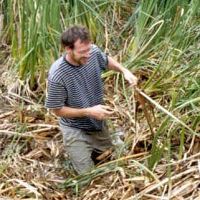Klos et al., 2017
Predicting Plant-Accessible Water in the Critical Zone: Mountain Ecosystems in a Mediterranean Climate
Klos, P. Z.; Goulden, M.; Riebe, C. S.; Tague, C.; O’geen, A. T.; Flinchum, B. A.; Safeeq, M.; Conklin, M. H.; Hart, S. C.; Berhe, A. A.; Hartsough, P. C.; Holbrook, S.; Bales R. C.; (2017)
Fall Meeting, American Geophysical Union, December 2017. Abstract H23H-1769.
-
Reynolds, GRAD STUDENT
-
Sierra, INVESTIGATOR
-
Sierra, INVESTIGATOR
-
Sierra, INVESTIGATOR
-
Sierra, COLLABORATOR, GRAD STUDENT
-
Sierra, INVESTIGATOR
-
Sierra, INVESTIGATOR
-
Sierra, INVESTIGATOR
-
Sierra, INVESTIGATOR
-
Sierra, INVESTIGATOR
-
Boulder, Calhoun, Eel, Reynolds, Sierra, COLLABORATOR
-
Sierra, INVESTIGATOR
Abstract
Enhanced understanding of subsurface water storage, and the below-ground architecture and processes that create it, will advance our ability to predict how the impacts of climate change – including drought, forest mortality, wildland fire, and strained water security – will take form in the decades to come. Previous research has examined the importance of plant-accessible water in soil, but in upland landscapes within Mediterranean climates the soil is often only the upper extent of subsurface water storage. We draw insights from both this previous research and a case study of the Southern Sierra Critical Zone Observatory to: define attributes of subsurface storage, review observed patterns in its distribution, highlight nested methods for its estimation across scales, and showcase the fundamental processes controlling its formation. We observe that forest ecosystems at our sites subsist on lasting plant-accessible stores of subsurface water during the summer dry period and during multi-year droughts. This indicates that trees in these forest ecosystems are rooted deeply in the weathered, highly porous saprolite, which reaches up to 10-20 m beneath the surface. This confirms the importance of large volumes of subsurface water in supporting ecosystem resistance to climate and landscape change across a range of spatiotemporal scales. This research enhances the ability to predict the extent of deep subsurface storage across landscapes; aiding in the advancement of both critical zone science and the management of natural resources emanating from similar mountain ecosystems worldwide.
Citation
Klos, P. Z.; Goulden, M.; Riebe, C. S.; Tague, C.; O’geen, A. T.; Flinchum, B. A.; Safeeq, M.; Conklin, M. H.; Hart, S. C.; Berhe, A. A.; Hartsough, P. C.; Holbrook, S.; Bales R. C.; (2017): Predicting Plant-Accessible Water in the Critical Zone: Mountain Ecosystems in a Mediterranean Climate. Fall Meeting, American Geophysical Union, December 2017. Abstract H23H-1769..
Explore Further












